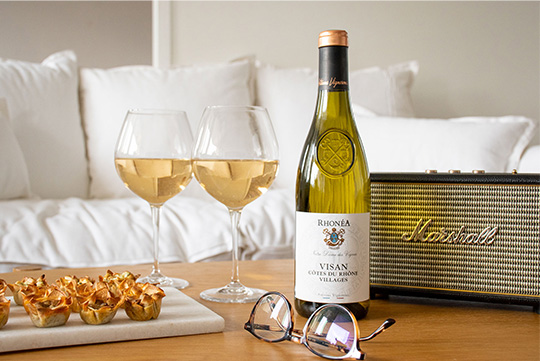Discovering Visan
Published : 2023-04-19



In the Middle Ages, under the papacy of Benedict XII and Clement VI, Visan passed into the hands of the popes and became part of the papal territory in 1344. This led to the creation in 1475 of the "Confrérie des Vignerons de Visan ", the first in the region.
The Cooperative winery of Visan was born in 1935. Until today, it is a fervent protector of the appellation and played an important role in 1966 for the recognition of the vineyard in its three colours as "AOC Côtes du Rhône Villages Visan".
Composed of marls and sands, the soils of Visan are very stony, allowing the development of roots in depth.
The terroir of Visan is composed of three distinct zones:
The first in the West is composed of alluvial terraces, with limestone pebbles and some flint as well as a clay matrix. It is based on tertiary-age marl materials and allows natural water regulation throughout the year. Its altitude is around 100m2 and gives it juicy and crisp wines.
The second zone composed of rocks of the Miocene period (tertiary age), is located on the hills. Reliefs that are installed on 180m of marls and pebbles form a «thousand leaves». Pebbles create permeability and marls create water and mineral reserves in the soil. It is the world of richness and elegance that allows the formation of fine tannins an ideal soil for Grenache.
The third zone is made of tertiary sands, of marine origin and older than the other terroirs. Originally, they are sandstone cemented by limestone. It gives subtle white wines and red of great finesse.
Reds are powerful, elegant and with very round on the palate. The blend is made of Grenache (minimum 40%) and Syrah & Mourvèdre (minimum 25%). In their youth, they show seducing aromas of red berries. They age very well developing nice leather and truffle notes.
Rosés are very fruity with peppery hints. Their blend is similar to the red wines. White grape varieties can also enter in the blend (max. 20%) for even more aromas and vivacity.
Grenache Blanc, Clairette, Bourboulenc and Viognier are the most common grape varieties for the white wines. They are best enjoyed in their youth to benefit from fresh white flower and fruit aromas. These are appealing and crispy wines that pair very well with numerous dishes, from tapas to desserts.